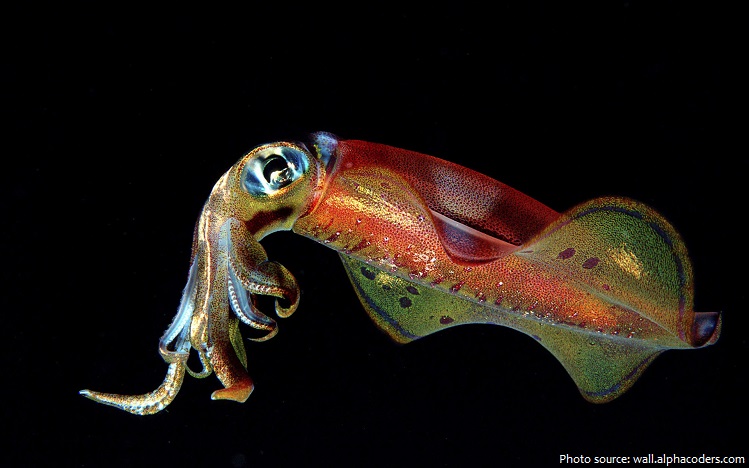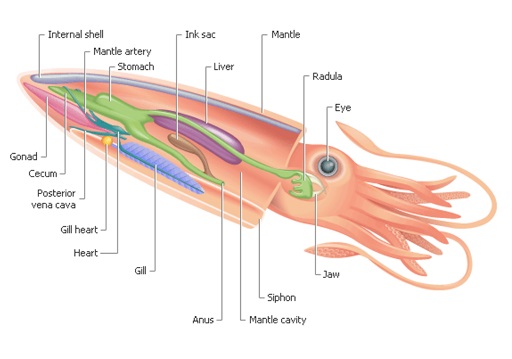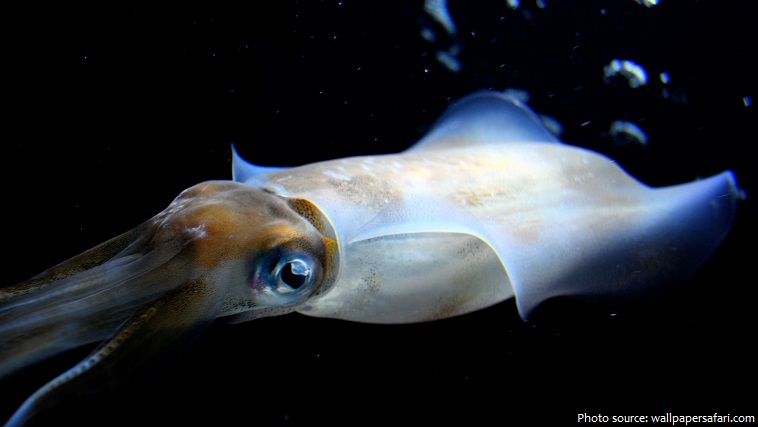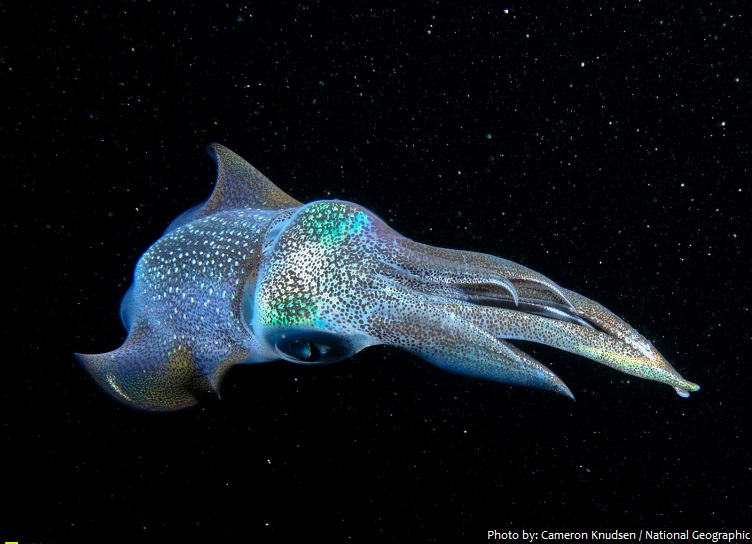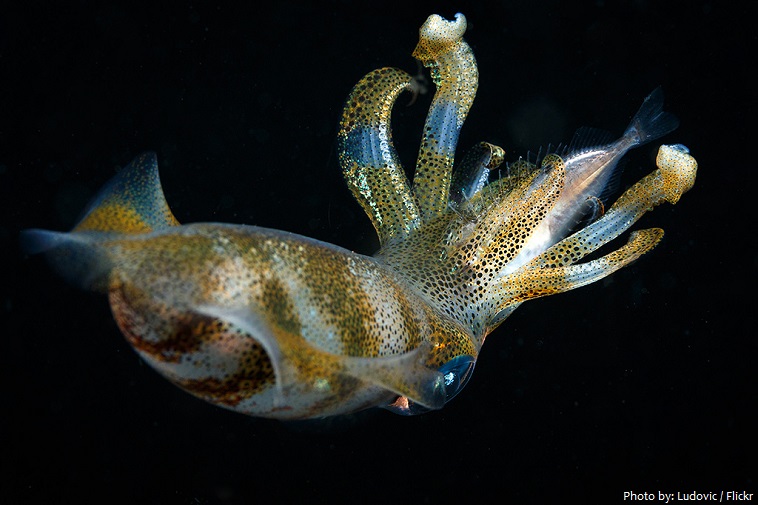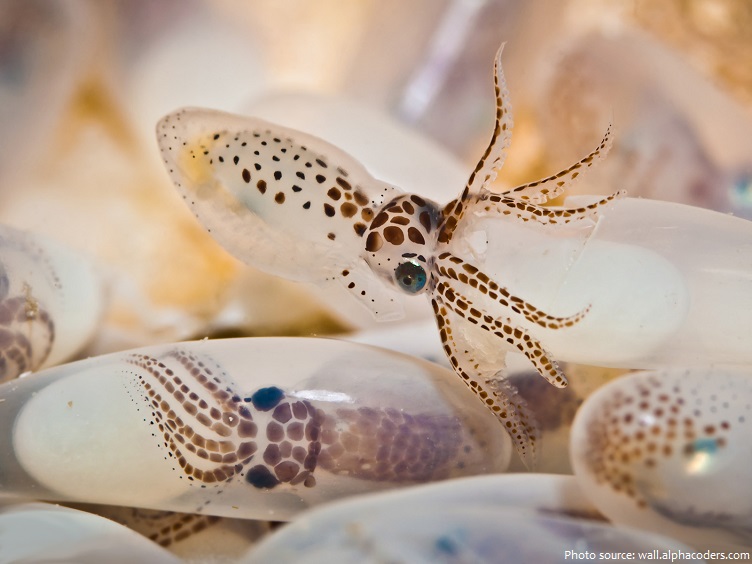Squids are marine cephalopods with eight arms and two long tentacles, typically able to change color.
The squid is one of the most highly developed invertebrates, well adapted to its active, predatory life.
There are more than 300 known species of squid out there that have been identified.
Squid are known to inhabit almost every major body of saltwater on the planet and even some bodies of freshwater. Many squid are adept at surviving in cold, oxygen-deprived waters deep below the surface.
The largest quantity of squid species are found throughout the North Atlantic Ocean. The North Pacific is also home to a variety of squid types.
Most of squid species will be found at least 300 meters (1,000 feet) below the surface. The water is cooler there and they can be alone.
The lifespan is 6 months for the smaller squid and up to 5 years for the larger ones.
The smallest squid is the pygmy squid which can be less than 2.5 centimeters (1 inch) long while the largest is the colossal squid which can be up to 14 meters (46 feet) in length and weighing possibly up to 750 kg (1,650 lb).
Squid have gills just like fish.
Squid have three hearts. Two branchial hearts feed the gills, each surrounding the larger systemic heart that pumps blood around the body.
Squid blood is blue, not red as in humans. This is because squid blood contains a copper-containing compound called haemocyanin. In humans the blood is red and contains the iron compound haemoglobin.
The skin is covered in chromatophores, which enable the squid to change color to suit its surroundings, making it practically invisible. The underside is also almost always lighter than the topside, to provide camouflage from both prey and predator.
The main body mass is enclosed in the mantle, which has a swimming fin along each side.
They move through the water tail first instead of head first.
A squid moves using a system of jet propulsion, pulling water into its mantle cavity, contracting the muscles of the mantle wall and expelling the water through its siphon or funnel. Its fins aid maneuverability and also help with lift and motion while the squid travels at slow speeds.
Squid are strong swimmers and certain species can “fly” for short distances out of the water.
Squid are able to reach 40 km/h (25 mph), making them the speediest marine invertebrates.
All squid have a sac of ink inside the mantle. The ink is a dark liquid and is expelled through the funnel. If the squid meets a predator, it shoots out a cloud of ink, which hides the squid so it can escape.
Squid and octopus have an intricate nervous system, more complex than other molluscs, and invertebrates in general.
Some species of squid are able to glow in the dark. Research shows this is due to them having bioluminescent organs.
The eyes, on either side of the head, each contain a hard lens. The image is focused by changing the position of the lens, as in a camera or telescope, rather than changing the shape of the lens, as in the human eye.
Squid can hear, scientists have confirmed. But they don’t detect the changes in pressure associated with sound waves, like we do. They have another, more primitive, technique for listening: They sense the motion generated by sound waves.
They have small teeth on the sides of their tongue. But their primary weapon is their beak which is similar to a parrot’s. They use it to catch its prey and tear it into manageable pieces.
All squid are carnivores and eat mainly fish, shrimp, crabs and even other squid. They are ambush predators, often relying on stealth to sneak up on prey and capture it before it can escape.
Some squid species live in schools like fish and some are solitary.
When it is time for the mating to occur large groups of males and females come together at dawn and start swimming rapidly in large circles. After a while you can see two squids swimming together. These will be the ones starting the mating.
After a male and female mate, the female squid lays eggs. Thousands of eggs can be produced at a time by one female. She will distribute them in hidden areas of the water including under rocks or in various holes and crevices she can find. It can be up to eight weeks before those eggs hatch so keeping them save from predators can be difficult. The female squid don’t wait around for them to hatch, they leave after depositing them.
The squid’s natural predators include birds, fish, sharks and whales.
Some species of squid have been found to live more than 4,000 meters (13,000 feet) deep in the water.
The giant squid have eyeballs that are the same size as a standard basketball.
Squid ink contains dopamine, a neurotransmitter that in human brains, produces the sensation of euphoria. It is not known what role it plays in squid and why it is in the ink.
The “fire shooter squid” formally known as Heteroteuthis Dispar, is squid that shoots out a cloud of light from bioluminescent photophores, to distract predators.
Neuroscientists in training learn the basics of neurosurgery by practicing on Loligo pealei squid. Their thick axon, thicker than any human nerves, is easier to start with.
Giant squid are featured in literature and folklore with a frightening connotation. The Kraken is a legendary tentacled monster possibly based on sightings of real giant squid.
Many species are popular as food in cuisines as diverse as American, Basque, Canadian, Chinese, English, Filipino, Greek, Italian, Japanese, Korean, Portuguese, Spanish, Tunisian, Turkish and Vietnamese.
Calamari is a culinary name for squid, especially for dishes from the Mediterranean, notably fried squid (fried calamari). There are many ways of preparing and cooking squid, with every country and region having its own recipes.

